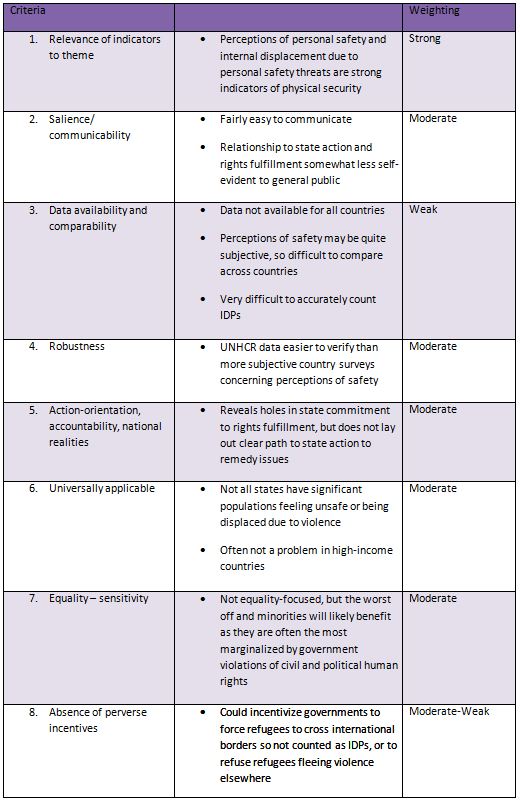Post-2015 Development Issues: Personal Security

More on:
As discussed in previous blog posts in this series, good governance and human rights are central aspects of global development. Fundamental to human freedom, these objectives are both an end in themselves and a means to an end, and should be included in the post-2015 global development agenda. In this regard, guaranteeing personal security is a critical development goal.
This goal meets the criteria for goal setting—it embodies a consensus normative and ideational objective, is actionable and serves a “booster” function for an important but neglected issue, is universally applicable, and appropriate targets and indicators would strengthen accountability.
Once again, measuring performance on this goal is not as impossible as it may appear at first glance. This post discusses indicators for personal security. My last post tackled the challenge of measuring fulfillment of civil and political rights.
"Personal security" is an inherently context-specific issue, so at least some indicators should be designed from the bottom up. A bottom-up approach would ensure that indicators support policy objectives close to the operational level, and ensure that they are actually appropriate and practically relevant. Such “active indicators” should be designed by the domestic operational authorities responsible for the administration of justice (e.g., police, judges) to reflect performance on crime, public safety, police effectiveness, and detention. Measures could include both surveys of end-users and standard socioeconomic demographic data.
Does this country-owned, bottom-up approach meet the selection criteria for indicators?


There are also some cross-nationally comparable indicators that could be appropriate measures of personal security, to complement the bottom-up indicators. These include the proportion of population feeling "unsafe," (e.g. walking alone in area after dark or alone at home at night), based on public perception surveys or household surveys; and the number of internally displaced persons (number of individuals who have been forced to leave their homes as a result of or in order to avoid the effects of armed conflict, situations of generalized violence, violations of human rights or disasters, and who have not crossed an international border). Both are based on demographic data and expert assessments from the Internal Displacement Monitoring Centre, as used by UNHCR.
Do these cross-national measures meet the selection criteria for indicators?

Previous posts in the series can be found here, here, here, here, here, here, and here.
More on:
 Online Store
Online Store